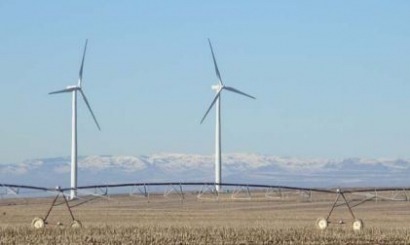
Here are some facts about SMWT and its promising market that cannot be ignored:
So why aren’t these technologies more widely used, especially in developing countries where cost is such a big issue?
Despite the lack of market information on SMWT in these areas, there is the general agreement that they are only a small percentage of the off-grid market.
The answer is blowing in the wind
With this question in mind, at the beginning of 2012 the Alliance for Rural Electrification asked its wind members to identify the barriers they have faced while doing business in developing countries. These were the main conclusions:
In order to tackle these barriers, the Alliance launched a year-long Small Wind Campaign in June 2012.
One of the common elements in the barriers identified was the lack of information/awareness on the part of energy decision-makers. Without proper knowledge and with such a small amount of small wind systems installed in developing countries, it is very difficult for those responsible to create a suitable legal framework for fostering SMWT. Therefore, the first step of the Campaign was to pass on reliable, transparent, relevant and tailored information about SMWT.
The approached favoured mainly small groups and personal meetings, and the content focused on real-life projects with challenges that the audience could relate to and apply in their own communities.
The pillar of the Small Wind Campaign is the position paper “The potential of small and medium wind energy in developing countries” (available for free download at ruralelec.org), which does not just describe the technology, but also includes recommendations and policy tools. The challenge of the initiative was to create opportunities for contact in a market that remains extremely fragmented sector.
Six months into the project, activities included online webinar sessions, a side event during the 1st International Off-Grid Renewable Energy Conference and Exhibition (IOREC) celebrated in Ghana, a Business Delegation to Ivory Cost and several virtual and physical workshops throughout the developing world.
The initial contact has been made, and the basics about SMWT delivered to an estimated 100 stakeholders from developing countries.
For the Alliance and its members it was an opportunity to assess first-hand the real situation of SMWT in these largely unknown markets.
Although the ultimate objective of the Campaign was the creation of partnerships and business opportunities, from very early on in was clear that a step back needed to be taken in order to fill basic gaps in information. Aspects such as how to evaluate if the technology in suitable for a specific area, how to maintain it in the long-term, how to choose the most suitable product and, most important of all, how to make realistic expectations became the core of the presentations during the beginning of the Campaign. In the remaining next six months the Alliance will build on this first stage to include other essential elements to its campaign.
The long way to go
The good news is that decision-makers in developing countries have shown interest and curiosity about renewable energies in general and wind in particular. Renewable seem to tick all the boxes of their particular energy needs: the decreasing renewables costs and the rising price of fossil fuels, the increasing electricity needs in off-grid areas and even the increasing international financing for renewable energies, environment and climate change as well as energy access.
With the Alliance’s Small Wind Campaign the foot is on the door – so how to move forward and what challenge to approach next?
Balthasar Klimbie, Director of Dutch Small Wind and one of the participating members suggests “In my opinion, this first step was quite good for raising awareness. Next we should try to work on training and capacity building. Only through passing on knowledge to the local communities can we ensure the sustainability of the systems. We need to make sure that decision-makers know how to deal with this issue. There is a long way to go”.
Taking into consideration the conclusions and information needs detected during the first part of the Campaign, new efforts will also address the financial side of projects. For some of the next online and in-person meetings, the Alliance will partner with international organisations such as the Asian Development Bank. A virtual Business Delegation covering Asia and the Pacific, and several Webinars are already in the works. And, since the energy storage sector is facing similar barriers in developing markets, the Alliance is already planning the launch of the Battery Campaign in June 2013, in order to ease the path of a technology that ensures the provision of reliable electricity service.
During its first six months, the Small Wind Campaign has walked a few steps towards reaching its very ambitious goal, and although its impact may seem a drop of water in the ocean (especially compared to the 1.3 billion people without electricity today), if the enthusiasm and belief of the people involved shows anything, is that we are on the right track.
To know more about Small Wind Campaign, please contact the Alliance for Rural Electrification at are@ruralelec.org or +32 2 400 10 53.
Marcus Wiemann is responsible for the policy sector and outreach for the Alliance for Rural Electrification (ARE). With a background in Internal Economics as well as in Political and Environmental Sciences, he works closely together with ARE partners and international organisations on numerous advocacy and policy actions. ARE has become a pioneering actor in the field of sustainable development, supporting and bringing together renewable energy companies who are passionate about rural electrification in developing countries through off-grid renewable energies.
For additional information:

